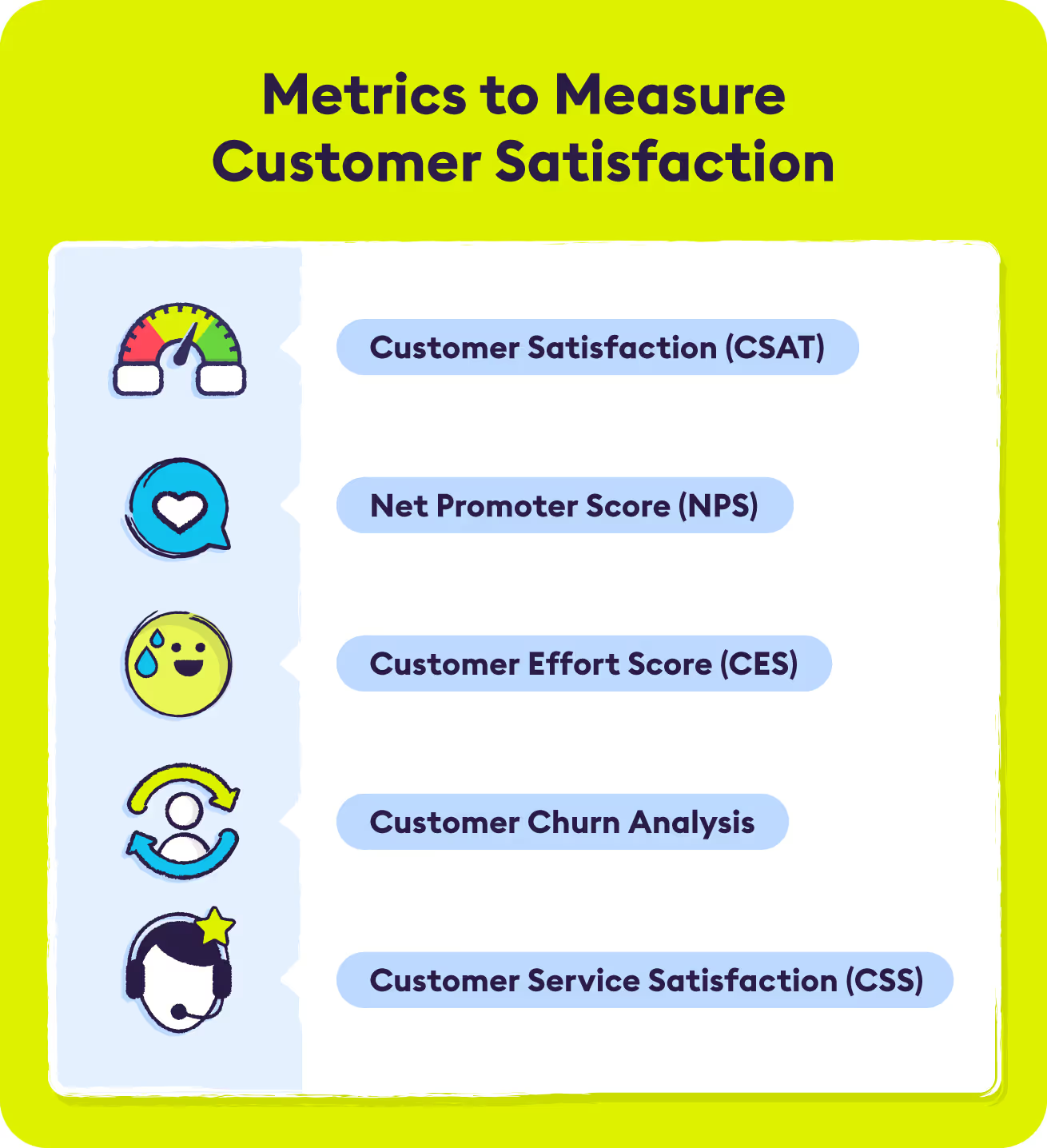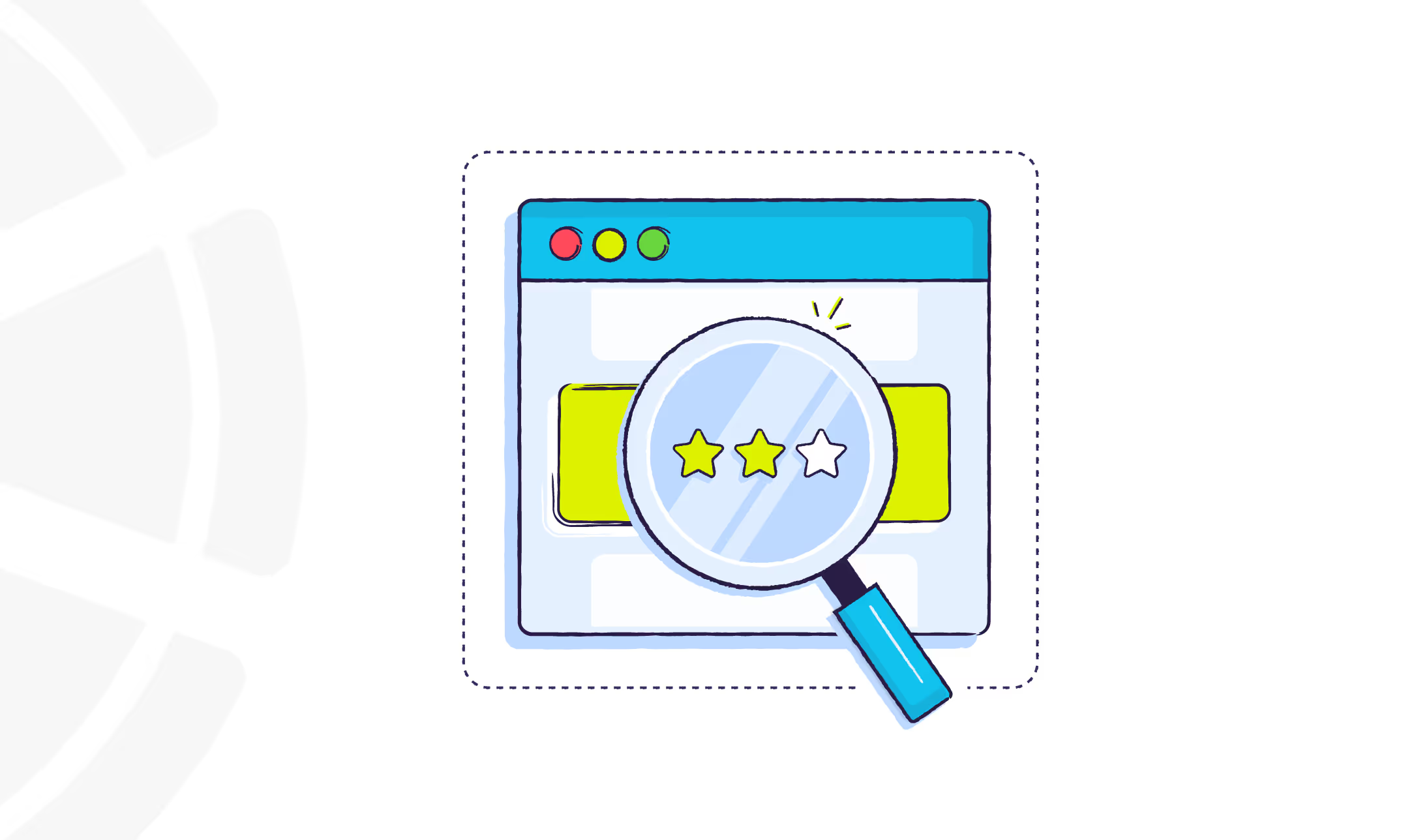Improving customer satisfaction by addressing consumer pain points and working to enhance the overall customer experience is vital to a company’s success. If your customers are unhappy during any point of their journey, whether with your website, customer service, or product, you risk losing not only that customer, but also damaging your brand.
Below we explain how to measure customer satisfaction as well as how to improve customer experience so that your business can flourish.
What is Customer Satisfaction?
Customer satisfaction measures whether or not customers feel your company’s product or service meets their expectations. A company should always be focused on the customer and offer quality products and services that are satisfactory and competitive to what other brands offer. Understanding how your customers feel about your brand will help to improve the relationship and bolster customer satisfaction.
Importance of Measuring Customer Satisfaction

It’s critical not to assume what the customer wants or expects, but instead to use data to understand the voice of the customer and inform your decisions. When you focus on improving customer satisfaction, you will see your bottom line improve. The reason is, with improved customer satisfaction, you can expect to see higher customer lifetime values, increases in word-of-mouth marketing, and a reduced customer churn rate.
Improve Customer Lifetime Value (CLV)
Focusing on customer retention is critical as customer acquisition is costly. In fact, acquiring a new customer costs on average six to seven times more than retaining an existing one. Given customer acquisition costs, it’s important to maximize CLV. This metric indicates the total revenue a single customer brings to a business. The only way to keep customers coming back for more is to ensure customer satisfaction. Calculate your businesses Customer Lifetime Value here.
Encourage Word-of-Mouth Marketing
When customers not only have a positive attitude toward your brand, but also are genuinely excited by what you’re doing, they will likely become brand advocates who share their experience with friends and family members by word-of-mouth and through online reviews. This is a powerful form of marketing. Not only is it free, but 92% of people trust recommendations from friends and family more than any other form of advertising.
Reduce Customer Churn Rate
Customer churn rate refers to the rate at which customers leave your company. It’s important to mitigate customer churn as ultimately it will lead to a loss of revenue. The main reasons customers churn is because the product doesn’t meet their expectations or they experience poor customer service. By understanding any pain points or problems your customers are experiencing, you will reduce your customer churn rate. Here are 10 proven strategies to reduce churn rate and improve client retention.
Ways to Measure Customer Satisfaction

Customer satisfaction metrics can help you understand how well your brand is meeting customer expectations.
The easiest and best ways to collect meaningful data is by monitoring communication channels and through customer surveys. By analyzing the data you collect, you can improve customer loyalty, revenue retention, and your brand’s image.
Learn how to measure customer satisfaction below.
1. Customer Satisfaction Score (CSAT)
A customer satisfaction score (CSAT) is calculated based on customers answering a question such as “How satisfied are you with your experience?” They are asked to answer this question on a scale of 1–5 or 1–10, and the CSAT is calculated as an overall percentage. You want to look only at the responses at the top end of the scale.
So for a question on a scale of 1–5, you just want to take the 4 and 5 responses, and for 1–10 only the 8–10 responses. Then you will total these positive responses, divide by the total number of responses, and multiply by 100 to get a percentage. A higher score denotes a higher level of satisfaction. CSAT is typically the most effective metric when it comes to handling customer complaints and support requests. It’s also often used to close the loop with a customer after they’re sent a support survey.
2. Net Promoter Score (NPS)
The net promoter score (NPS) is a way for companies to easily track and measure promoters, passives, and detractors in order to understand their performance through their customers’ eyes. You can calculate the net promoter score by asking customers to answer a question like “How likely is it that you would recommend us to a friend on a score of 0–10?”
Based on their responses, customers are then grouped into three buckets: promoter, passive, and destructor. Promoters are customers who responded in the 9–10 range, passives in the 7–8 range, and detractors in the 0–6 range. You then take the total number promoters and subtract the total number of detractors. Divide this number by the total number of responses overall, and then multiply the result by 100 to get an answer between -100 and 100. Passives are not factored into the equation.
It’s important to work on improving your net promoter score as it’s a representation of customer experience and your business model at large.
3. Customer Effort Score (CES)
The customer effort score (CES) measures the ease of the customer experience. It specifically looks at how much effort a customer has to exert in order to interact with your brand. For example, how much effort it takes the customer to get an issue resolved, a request filled, or a product shipped.
Similar to the CSAT and NPS, CES is measured through a customer feedback survey. Ask a question such as “On a scale of 0–10, how easy was it to resolve this issue?” It’s best to deploy this type of question immediately after a customer has an interaction with customer service or purchased a product. You can also use this question to measure the overall experience someone has had with your brand or product in general.
4. Customer Feedback Analysis

A customer feedback analysis can help you find out exactly what customers think about your brand. To conduct this type of analysis, you’ll extract insights from customer feedback from surveys, reviews, and on social media. You can either manually categorize the data or use AI-backed tools, such as deep learning algorithms, to do so.
Try our online insight tagger and insert a sample comment from your most recent customer survey and see first hand how open ended text can be analysed using AI.
Finally, you’ll want to analyze the data and look for patterns such as:
- Very low or high ratings on certain products
- Demographic trends, such as different product preferences based on age or location
- Customer service complaints that stem from a specific product or location
By analyzing this data and looking for trends, you’ll develop a better understanding of the customer journey. Then you can know where to make improvements in order to boost customer satisfaction.
5. Customer Churn Rate
The customer churn rate is determined by looking at the total number of churned customers divided by your total customers. A high churn rate is a good indication that your customers aren’t satisfied with your product or service.
A churn rate analysis can provide even more information about why your customers might be leaving. Conduct a churn analysis by following these steps:
- Evaluate your competitors: Understand where your competitors shine and also fall short so that you can be sure you’re able to outperform them. Make sure you're offering a competitive product and quality customer service.
- Look for repeat issues: Take a deep dive into support tickets and chatbots and look for issues that seem to repeat themselves, such as a product not meeting expectations. Make it a priority to solve issues that are coming up over and over.
- Locate customer drop-off points: If you experience a large churn, consider what else was going on during this time. Are there outside factors impacting customers, such as a national crisis, or is your product seasonal? Did you add a new technology or otherwise change your website? These factors could be impacting the customer experience, and therefore, causing customers to flee. When you do pinpoint drop-off points, be sure to reach out to customers with special offers like exclusive discounts or free gifts in order to combat churn.
6. Customer Service Satisfaction (CSS)
Customer service satisfaction (CSS) measures how satisfied your customers are with the support you provide. For example, how quickly you respond to emails or how easy it is to get in touch with a representative by phone. The easiest way to collect this data is to ask customers about their experience after an issue is resolved with your support team via email or chat. Have them rate their experience on a scale, for example a scale of 1–10 or very unsatisfied to very satisfied.
How to Improve Customer Satisfaction
Once you develop an understanding of your current level of customer satisfaction, it’s important to address how you can improve. Here are several areas you can focus on:
- Make it a priority to troubleshoot any distinct problem areas, whether they be with your customer service or product.
- Continue to listen to unhappy customers and make them feel heard.
- Identify what’s resonating with customers, and not only what’s making them unsatisfied, so that you can do more of the good.
- Make sure your employees are happy so they exude positivity and are able to strategically handle negative feedback from customers.
Chattermill helps companies gain actionable customer satisfaction insights by gaining a complete view of your customer experience. Learn more to see if our solution could be the right fit for you.
How to Measure Customer Satisfaction: FAQs
What is customer satisfaction measurement?
Customer satisfaction measurement is the process of collecting and analyzing customer feedback to understand how well products, services, or experiences meet expectations.
Why is measuring customer satisfaction important?
It helps businesses identify strengths, uncover areas for improvement, and track changes in customer sentiment over time. High satisfaction levels lead to loyalty and repeat business.
What metrics are commonly used to measure satisfaction?
Popular metrics include Customer Satisfaction Score (CSAT), Net Promoter Score (NPS), and Customer Effort Score (CES). Together, they provide a clear view of customer happiness and loyalty.
How do surveys help measure satisfaction?
Surveys provide direct feedback from customers. Simple questions with rating scales, combined with open-ended questions, allow businesses to capture both quantitative and qualitative insights.
How often should businesses measure customer satisfaction?
Regular measurement is recommended, often after key interactions such as purchases or support calls. Ongoing tracking helps detect trends and respond to changes quickly.















